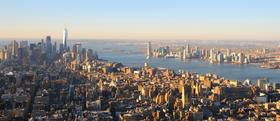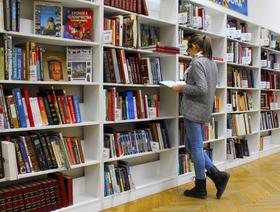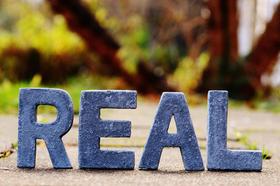Serving 445 students in grades 9-12, Ulysses High School ranks in the bottom 50% of all schools in Kansas for overall test scores (math proficiency is bottom 50%, and reading proficiency is bottom 50%).
The percentage of students achieving proficiency in math is ≤5% (which is lower than the Kansas state average of 31%). The percentage of students achieving proficiency in reading/language arts is 15-19% (which is lower than the Kansas state average of 32%).
The student-teacher ratio of 15:1 is higher than the Kansas state level of 13:1.
Minority enrollment is 77% of the student body (majority Hispanic), which is higher than the Kansas state average of 39% (majority Hispanic).
Quick Facts (2025-26)
- Grades: 9-12
- Enrollment: 445 students
- Student-Teacher Ratio: 15:1
- Minority Enrollment: 77%
- Graduation Rate: 90-94% (Top 20% in KS)
- Overall Testing Rank: Bottom 50%
- Math Proficiency: ≤5% (Btm 50%)
- Reading Proficiency: 15-19% (Btm 50%)
- Science Proficiency: 10-14% (Btm 50%)
- Source: National Center for Education Statistics (NCES), KS Dept. of Education
Top Rankings
Ulysses High School ranks among the top 20% of public schools in Kansas for:
Category
Attribute
Graduation Rate
School Overview
Ulysses High School's student population of 445 students has declined by 10% over five school years.
The teacher population of 30 teachers has grown by 20% over five school years.
Grades Offered
Grades 9-12
(No virtual instruction)
(No virtual instruction)
Total Students
445 students
Gender %
Total Classroom Teachers
30 teachers
Last Day of School
Mon. May 25, 2026
Campus Size
30 acres
School Motto
Strive for Excellence
School Mascot
Eagles
School Rankings
Ulysses High School ranks within the bottom 50% of all 1,269 schools in Kansas (based off of combined math and reading proficiency testing data).
The diversity score of Ulysses High School is 0.43, which is less than the diversity score at state average of 0.57. The school's diversity has stayed relatively flat over five school years.
Overall Testing Rank
#1208 out of 1269 schools
(Bottom 50%)
(Bottom 50%)
Math Test Scores (% Proficient)
≤5%
31%
Reading/Language Arts Test Scores (% Proficient)
15-19%
32%
Science Test Scores (% Proficient)
10-14%
31%
Student-Teacher Ratio
15:1
13:1
American Indian
1%
1%
Asian
n/a
3%
Hispanic
72%
22%
Black
1%
7%
White
23%
61%
Hawaiian
n/a
n/a
Two or more races
3%
6%
All Ethnic Groups
Graduation Rate
90-94%
89%
Participates in the National School Lunch Program (NSLP)
Yes
Eligible for Free Lunch
59%
42%
Eligible for Reduced Lunch
10%
7%
School Statewide Testing
School District Name
Source: National Center for Education Statistics (NCES), KS Dept. of Education
School Notes
- School Mascot: Eagles
Profile last updated: 02/09/2025
Frequently Asked Questions
What is Ulysses High School's ranking?
Ulysses High School is ranked #1208 out of 1,269 schools, which ranks it among the bottom 50% of public schools in Kansas.
What percent of students have achieved state testing proficiency in math and reading?
≤5% of students have achieved math proficiency (compared to the 31% KS state average), while 15-19% of students have achieved reading proficiency (compared to the 32% KS state average).
What is the graduation rate of Ulysses High School?
The graduation rate of Ulysses High School is 90-94%, which is higher than the Kansas state average of 89%.
How many students attend Ulysses High School?
445 students attend Ulysses High School.
What is the racial composition of the student body?
72% of Ulysses High School students are Hispanic, 23% of students are White, 3% of students are Two or more races, 1% of students are American Indian, and 1% of students are Black.
What is the student-teacher ratio of Ulysses High School?
Ulysses High School has a student ration of 15:1, which is higher than the Kansas state average of 13:1.
What grades does Ulysses High School offer ?
Ulysses High School offers enrollment in grades 9-12 (No virtual instruction).
What school district is Ulysses High School part of?
Ulysses High School is part of Ulysses School District.
School Reviews
Review Ulysses High School. Reviews should be a few sentences in length. Please include any comments on:
- Quality of academic programs, teachers, and facilities
- Availability of music, art, sports and other extracurricular activities
Recent Articles

U.S. Public vs. Private Schools Guide 2025
A clear, up-to-date 2025 guide comparing U.S. public and private schools—tuition, funding, outcomes, policy trends, and expert insights for families and educators.

Best School Match 2025: Public vs Charter vs Magnet Meta Description
A 2025 guide comparing public, charter, and magnet schools to help families choose the best education match.

Private vs. Public School: Reality Check- 2025
A 2025 update on private vs. public schools—tuition, enrollment trends, policy shifts, and what parents should consider in today’s landscape.









